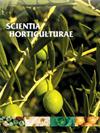茉莉酸甲酯和/或尿素,常规和纳米颗粒,叶面喷施:对葡萄氨基酸组成的影响
IF 3.9
2区 农林科学
Q1 HORTICULTURE
引用次数: 0
摘要
农业纳米技术为应对气候挑战提供了战略性和可持续的解决方案。此外,叶面生物刺激剂还可减轻气候变化对葡萄栽培的影响。本研究旨在评估叶面喷施茉莉酸甲酯(MeJ)、尿素(Ur)以及它们的组合(MeJ+Ur)对添普兰尼洛葡萄氨基酸组成的影响。这些氮化合物通过高压液相色谱法(HPLC)进行分析。在常规应用中,MeJ+Ur 被证明对提高葡萄汁中的氨基酸含量最有效。此外,MeJ 和 Ur 的联合应用显示出协同效应,增强了它们对葡萄氨基酸含量的影响。与常规处理相比,ACP-MeJ+Ur 叶面处理对 MeJ 和 Ur 的使用量显著减少,在所有研究应用中,ACP-MeJ+Ur 叶面处理对总氨基酸含量的提高幅度最大。判别分析突出了 MeJ+Ur 和 ACP-MeJ+Ur 的不同之处,强调了它们对葡萄氨基酸组成的影响。纳米技术在葡萄栽培中的应用为可持续实践提供了一种前景广阔的方法,在保持葡萄品质的同时减少了对环境的影响。本文章由计算机程序翻译,如有差异,请以英文原文为准。
Methyl jasmonate and/or urea, conventionally and on nanoparticles, foliar applications: Influence on grape amino acids composition
Nanotechnology in agriculture provides a strategic and sustainable solution to climate challenges. In addition, foliar biostimulants serve to mitigate the effects of climate change in viticulture. This work aims to evaluate the impact of foliar applications of methyl jasmonate (MeJ), urea (Ur), and their combination (MeJ+Ur), applied either conventionally (free) or supported on amorphous calcium phosphate nanoparticles (ACP), on the amino acids composition of Tempranillo grapes. These nitrogen compounds were analyzed by high pressure liquid chromatography (HPLC). Among the conventional applications, MeJ+Ur proved to be the most effective in increasing the amino acids content in grape must. Moreover, the combined application of MeJ and Ur showed a synergistic effect, enhancing their effect on the grape amino acids content. The ACP-MeJ+Ur foliar treatment resulted in the highest increase in total amino acids content among all applications studied, using significantly less MeJ and Ur compared to the conventional treatment. Discriminant analysis highlighted the distinctiveness of MeJ+Ur and ACP-MeJ+Ur, emphasizing their influence on the amino acids composition of grapes. Nanotechnology in viticulture offers a promising approach for sustainable practices, reducing environmental impact while maintaining grape quality.
求助全文
通过发布文献求助,成功后即可免费获取论文全文。
去求助
来源期刊

Scientia Horticulturae
农林科学-园艺
CiteScore
8.60
自引率
4.70%
发文量
796
审稿时长
47 days
期刊介绍:
Scientia Horticulturae is an international journal publishing research related to horticultural crops. Articles in the journal deal with open or protected production of vegetables, fruits, edible fungi and ornamentals under temperate, subtropical and tropical conditions. Papers in related areas (biochemistry, micropropagation, soil science, plant breeding, plant physiology, phytopathology, etc.) are considered, if they contain information of direct significance to horticulture. Papers on the technical aspects of horticulture (engineering, crop processing, storage, transport etc.) are accepted for publication only if they relate directly to the living product. In the case of plantation crops, those yielding a product that may be used fresh (e.g. tropical vegetables, citrus, bananas, and other fruits) will be considered, while those papers describing the processing of the product (e.g. rubber, tobacco, and quinine) will not. The scope of the journal includes all horticultural crops but does not include speciality crops such as, medicinal crops or forestry crops, such as bamboo. Basic molecular studies without any direct application in horticulture will not be considered for this journal.
 求助内容:
求助内容: 应助结果提醒方式:
应助结果提醒方式:


